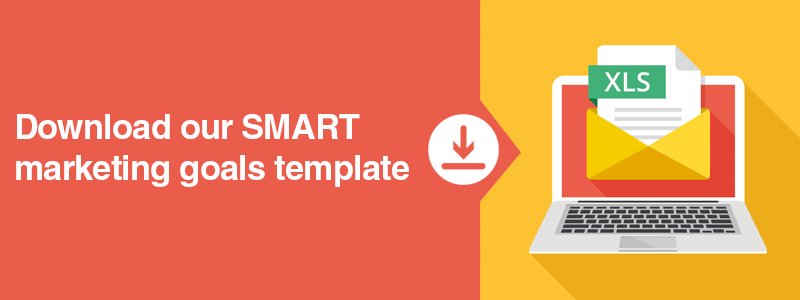If you’re a B2B marketer, you already know the most important thing about setting goals – it looks easy but it’s really quite hard. Anyone can toss out a random number – for leads, sales, website visitors, followers or any other metric – but unless it’s based on relevant, specific information, it’s just that – a random number.
The trick in setting your marketing objectives is to link your goals to the reality of your organization. To understand your organization’s true potential, you have to fully understand its limitations and flaws. This doesn’t mean that you have to start your goal-setting process with a critical review of everything from your marketing plan to your CEO. Rather, it just means you have to be realistic.
If your sales team is already stretched, for example, you don’t want to assign them an unattainable sales target, even if your VP of sales thinks it will be “motivating.” Or if you’re still working on your social media plan, it might not make sense to set a target for a specific number of followers just yet.
Luckily, there are some very good tools that can help you define your marketing goals. The SMART marketing goal template takes you step-by-step through a short series of questions to outline your B2B SMART goals, and helps you turn that information into an action plan.
What is SMART?
SMART is an acronym that describes the key points you should keep in mind in setting your goals. It stands for:
- Specific - Set real numbers with real deadlines. Don't just say, "I want more visitors."
- Measurable - Make sure that you can track your goals. Don't hide behind buzzwords like "brand engagement" or "social influence."
- Attainable - Work toward a goal that is challenging but possible. Don't try to take over the world in one night.
- Realistic – Be honest with yourself, because you know what you and your team are capable of. Don't forget any hurdles you may have to overcome.
- Time-bound – Set a deadline. Don't keep pushing towards a goal you might hit "some day."
Ready to begin? Download your SMART marketing goal template, and let’s get started. This worksheet lets you define each of your marketing goals separately, so you end up with a clearly-stated goal, timeline and a heads-up on potential roadblocks for each one.
SMART marketing goals steps
Step 1: Summarize Your Goal
The first step is to write down a summary of what your goal is. Set a numbers-driven goal, keeping the SMART acronym in mind.
Step 2: Categorize Your Goal
Most marketers need to do one of three things: get more visitors to their site, get more visitors to convert into leads, or get more leads to convert into customers. When you click on the right of the white box in your template, a drop-down menu will appear and you can choose one of these three options.
Step 3: Set a Specific Numerical Goal
If you're not sure what you should be aiming for when setting your goal, then use ONE of the THREE calculators that are in the template. It will help give you an idea of what you should be working towards.
Step 4: Select a Completion Date
Select the length of time you think it will take to reach your goal. This will help you figure out how aggressive you need to be with your marketing efforts.
Step 5: Commit the Time
By selecting how many hours a week you can work on this goal, you’re setting another smaller goal that will help your marketing goals become reality.
Step 6: Be Aware of Potential Obstacles
Listing and preparing for the hurdles now will make it that much easier to reach your marketing goals.
You now have a goal and a timeline, and you’re ready to proceed. Click here to download your SMART marketing goal template and start setting your SMART goals.




.png?width=1080&name=Rebranding%20LS-3-Profile%20pic%20(1).png)